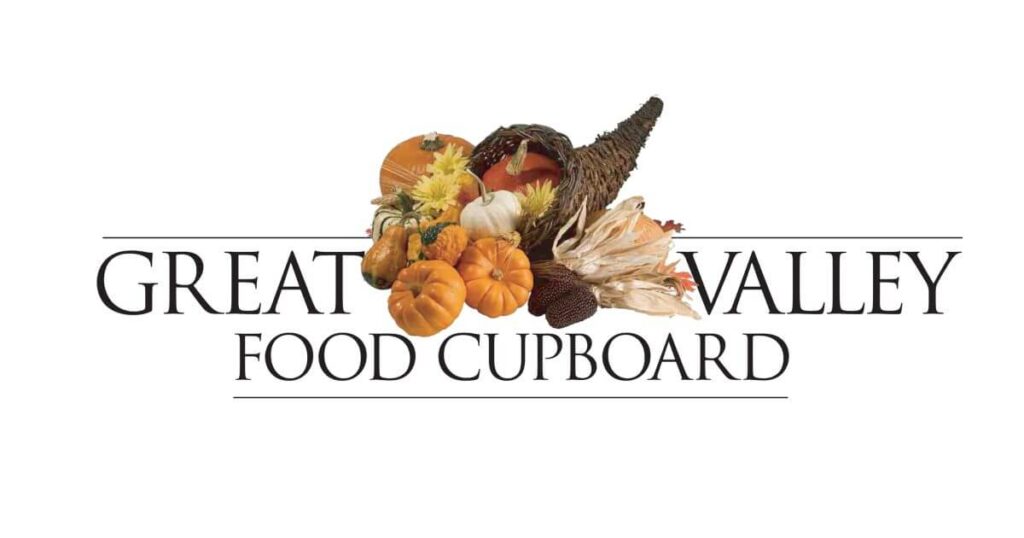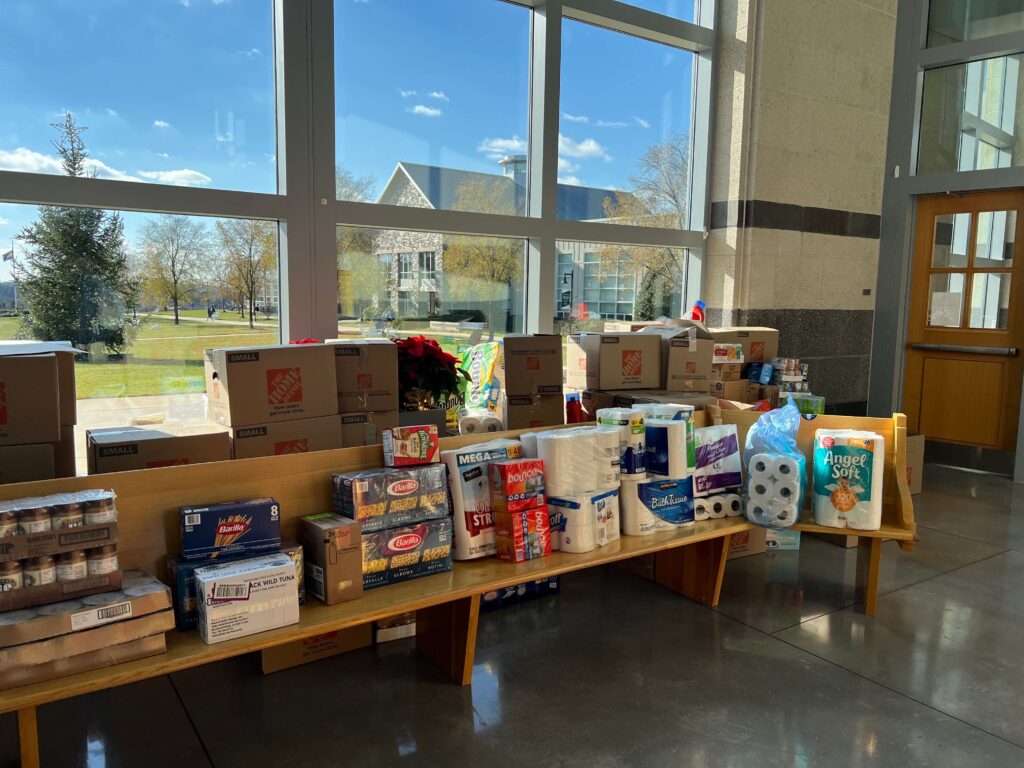Jack Crowley ’24
EA holds an annual necessities drive in November called the Can Drive where students are encouraged to donate food, toiletries, and cleaning supplies to help struggling families and individuals. While the tradition is long-standing, in the past few years, the Vestry and Community Service Coordinator Rebecca Brinks have started to make greater efforts to teach students about food insecurity and the Can Drive’s community partners.
For three weeks in November, members of the EA community are encouraged to donate different non-perishable food items and supplies that will be passed on to organizations that deal with food insecurity throughout Philadelphia and surrounding communities. In the upper school, each grade is assigned a certain category of items to bring in. In the middle and lower schools, the Can Drive is structured as a competition where grade levels compete for incentives. The Can Drive concludes prior to Thanksgiving.
The 2022 Upper School Can Drive’s community partners include Share Food Program, Great Valley Food Cupboard, and St. Mary’s Church in Chester. Share was established in 1986 and currently delivers millions of pounds of food to around 1,000,000 people in need each month.
Photo courtesy of sharesociety.ca
Brinks explains that “Share has historically been where most of the donations from the Can Drive go. Share is the largest-serving hunger relief food distribution organization in Philadelphia, and they’re probably one of the biggest food distribution organizations in America. After receiving the donations, they distribute their donations to small food pantries all over Philadelphia and the suburbs.”
According to its website, Share assists 305,000 children in nearly 800 schools through the National School Lunch Program. George Matysik, Executive Director of Share Food Program, believes that “the pandemic pushed food insecurity rates to heights we’d never seen. This need hasn’t diminished; the urgency has only grown. Together, we need to take action every chance we have.” In a time when food scarcity has increased tremendously, Matysik feels that “we must find innovative solutions for every obstacle in the way of food equity and justice. No matter what occurs in the next year or two, no matter what we face as a city or a country, one constant remains: people need to eat, and we’re going to be there to feed them.”
Share receives the majority of EA’s donations because it is the largest organization out of the three community partners. EA has also had a longstanding relationship with the organization and its programs. Brinks explains that “[EA] has always sent students to volunteer at Share because Share has the biggest outreach. Therefore, it always felt like by giving all of our contributions to Share, it was a good way to reach a lot of needs.”
Similar to Share, Great Valley Food Cupboard has benefited from EA’s Can Drive for years. Founded in 1711, the Great Valley Food Cupboard is a Christian organization that supplies food to families in need. The organization is located in Berwyn, a part of Chester County, PA and home to several underserved communities.

Photo courtesy of bcgv.com
According to their website, part of Great Valley Food Cupboard’s mission is “to provide an open expression of Christian worship for all sincere persons without regard to religious backgrounds or belief” in addition to developing “a sense of community into which all persons will be welcome, and to offer opportunities in Christian Service to all of our members.” Location is a key reason as to why it receives donations from the Can Drive. Brinks believes that “the idea that [EA] would also serve a food bank that was in our neighborhood” contributes to why it is an Upper School community partner.

Photo courtesy of Gianna Trala ’23
Finally, the Can Drive also contributes to St. Mary’s Church in Chester, an Episcopal, small-scale food bank established almost 40 years ago that serves just under 300 families per month. They collaborate with other organizations and churches in and around the Episcopal Dioceses of Pennsylvania. Head Chaplain Father Tim Gavin’s association with the Episcopal Dioceses of Pennsylvania has contributed to the established relationship between Episcopal and St. Mary’s Church in Chester.
This year, to increase food insecurity awareness, Gavin and Brinks partnered each Lower School and Middle School grade level with a different community partner. Brinks says, “This is something [EA] is really excited about because it offers the Middle and Lower Schools teaching opportunities.” Some classes have researched their community partners, exploring their mission statements and why these organizations are vital to aiding food insecurity. Representatives from some of these organizations have visited EA this year and talked with students during chapel services.
Brinks states, “It’s just been a wonderful way to not be just donating food to somebody that needs the food, but to make a more personal connection with them.” She explains that the Can Drive offers “students the opportunities to learn about food insecurity in communities that are nearby, to learn that certain things are more important than other things, and certain donations are more impactful than others. The Can Drive helps teach students about what food insecurity is and the many, many different faces of food insecurity.”
The Can Drive provides students with the opportunity to demonstrate EA’s core values of generosity and gratitude while helping local communities. The event is also utilized as a teaching tool to show students how food insecurity affects families. Vestry member Jacob Kim ’25 believes that “the Can Drive is important to EA because it represents our values of generosity and giving back to the community. This annual tradition allows students to be a part of something bigger than themselves and help those in need. It teaches us that charity should be seen as an opportunity to serve others. By offering our time and resources, we lighten the burdens of others; it is an act of grace and compassion, nurturing EA students to live with these values.”